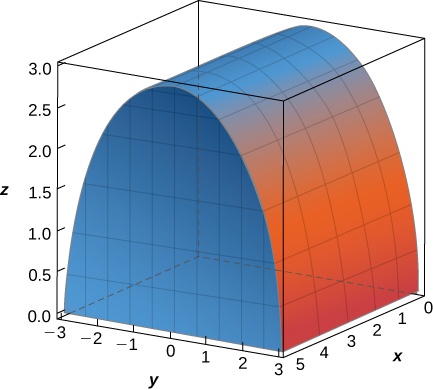7.4E:
- Page ID
- 26196
\( \newcommand{\vecs}[1]{\overset { \scriptstyle \rightharpoonup} {\mathbf{#1}} } \)
\( \newcommand{\vecd}[1]{\overset{-\!-\!\rightharpoonup}{\vphantom{a}\smash {#1}}} \)
\( \newcommand{\dsum}{\displaystyle\sum\limits} \)
\( \newcommand{\dint}{\displaystyle\int\limits} \)
\( \newcommand{\dlim}{\displaystyle\lim\limits} \)
\( \newcommand{\id}{\mathrm{id}}\) \( \newcommand{\Span}{\mathrm{span}}\)
( \newcommand{\kernel}{\mathrm{null}\,}\) \( \newcommand{\range}{\mathrm{range}\,}\)
\( \newcommand{\RealPart}{\mathrm{Re}}\) \( \newcommand{\ImaginaryPart}{\mathrm{Im}}\)
\( \newcommand{\Argument}{\mathrm{Arg}}\) \( \newcommand{\norm}[1]{\| #1 \|}\)
\( \newcommand{\inner}[2]{\langle #1, #2 \rangle}\)
\( \newcommand{\Span}{\mathrm{span}}\)
\( \newcommand{\id}{\mathrm{id}}\)
\( \newcommand{\Span}{\mathrm{span}}\)
\( \newcommand{\kernel}{\mathrm{null}\,}\)
\( \newcommand{\range}{\mathrm{range}\,}\)
\( \newcommand{\RealPart}{\mathrm{Re}}\)
\( \newcommand{\ImaginaryPart}{\mathrm{Im}}\)
\( \newcommand{\Argument}{\mathrm{Arg}}\)
\( \newcommand{\norm}[1]{\| #1 \|}\)
\( \newcommand{\inner}[2]{\langle #1, #2 \rangle}\)
\( \newcommand{\Span}{\mathrm{span}}\) \( \newcommand{\AA}{\unicode[.8,0]{x212B}}\)
\( \newcommand{\vectorA}[1]{\vec{#1}} % arrow\)
\( \newcommand{\vectorAt}[1]{\vec{\text{#1}}} % arrow\)
\( \newcommand{\vectorB}[1]{\overset { \scriptstyle \rightharpoonup} {\mathbf{#1}} } \)
\( \newcommand{\vectorC}[1]{\textbf{#1}} \)
\( \newcommand{\vectorD}[1]{\overrightarrow{#1}} \)
\( \newcommand{\vectorDt}[1]{\overrightarrow{\text{#1}}} \)
\( \newcommand{\vectE}[1]{\overset{-\!-\!\rightharpoonup}{\vphantom{a}\smash{\mathbf {#1}}}} \)
\( \newcommand{\vecs}[1]{\overset { \scriptstyle \rightharpoonup} {\mathbf{#1}} } \)
\( \newcommand{\vecd}[1]{\overset{-\!-\!\rightharpoonup}{\vphantom{a}\smash {#1}}} \)
\(\newcommand{\avec}{\mathbf a}\) \(\newcommand{\bvec}{\mathbf b}\) \(\newcommand{\cvec}{\mathbf c}\) \(\newcommand{\dvec}{\mathbf d}\) \(\newcommand{\dtil}{\widetilde{\mathbf d}}\) \(\newcommand{\evec}{\mathbf e}\) \(\newcommand{\fvec}{\mathbf f}\) \(\newcommand{\nvec}{\mathbf n}\) \(\newcommand{\pvec}{\mathbf p}\) \(\newcommand{\qvec}{\mathbf q}\) \(\newcommand{\svec}{\mathbf s}\) \(\newcommand{\tvec}{\mathbf t}\) \(\newcommand{\uvec}{\mathbf u}\) \(\newcommand{\vvec}{\mathbf v}\) \(\newcommand{\wvec}{\mathbf w}\) \(\newcommand{\xvec}{\mathbf x}\) \(\newcommand{\yvec}{\mathbf y}\) \(\newcommand{\zvec}{\mathbf z}\) \(\newcommand{\rvec}{\mathbf r}\) \(\newcommand{\mvec}{\mathbf m}\) \(\newcommand{\zerovec}{\mathbf 0}\) \(\newcommand{\onevec}{\mathbf 1}\) \(\newcommand{\real}{\mathbb R}\) \(\newcommand{\twovec}[2]{\left[\begin{array}{r}#1 \\ #2 \end{array}\right]}\) \(\newcommand{\ctwovec}[2]{\left[\begin{array}{c}#1 \\ #2 \end{array}\right]}\) \(\newcommand{\threevec}[3]{\left[\begin{array}{r}#1 \\ #2 \\ #3 \end{array}\right]}\) \(\newcommand{\cthreevec}[3]{\left[\begin{array}{c}#1 \\ #2 \\ #3 \end{array}\right]}\) \(\newcommand{\fourvec}[4]{\left[\begin{array}{r}#1 \\ #2 \\ #3 \\ #4 \end{array}\right]}\) \(\newcommand{\cfourvec}[4]{\left[\begin{array}{c}#1 \\ #2 \\ #3 \\ #4 \end{array}\right]}\) \(\newcommand{\fivevec}[5]{\left[\begin{array}{r}#1 \\ #2 \\ #3 \\ #4 \\ #5 \\ \end{array}\right]}\) \(\newcommand{\cfivevec}[5]{\left[\begin{array}{c}#1 \\ #2 \\ #3 \\ #4 \\ #5 \\ \end{array}\right]}\) \(\newcommand{\mattwo}[4]{\left[\begin{array}{rr}#1 \amp #2 \\ #3 \amp #4 \\ \end{array}\right]}\) \(\newcommand{\laspan}[1]{\text{Span}\{#1\}}\) \(\newcommand{\bcal}{\cal B}\) \(\newcommand{\ccal}{\cal C}\) \(\newcommand{\scal}{\cal S}\) \(\newcommand{\wcal}{\cal W}\) \(\newcommand{\ecal}{\cal E}\) \(\newcommand{\coords}[2]{\left\{#1\right\}_{#2}}\) \(\newcommand{\gray}[1]{\color{gray}{#1}}\) \(\newcommand{\lgray}[1]{\color{lightgray}{#1}}\) \(\newcommand{\rank}{\operatorname{rank}}\) \(\newcommand{\row}{\text{Row}}\) \(\newcommand{\col}{\text{Col}}\) \(\renewcommand{\row}{\text{Row}}\) \(\newcommand{\nul}{\text{Nul}}\) \(\newcommand{\var}{\text{Var}}\) \(\newcommand{\corr}{\text{corr}}\) \(\newcommand{\len}[1]{\left|#1\right|}\) \(\newcommand{\bbar}{\overline{\bvec}}\) \(\newcommand{\bhat}{\widehat{\bvec}}\) \(\newcommand{\bperp}{\bvec^\perp}\) \(\newcommand{\xhat}{\widehat{\xvec}}\) \(\newcommand{\vhat}{\widehat{\vvec}}\) \(\newcommand{\uhat}{\widehat{\uvec}}\) \(\newcommand{\what}{\widehat{\wvec}}\) \(\newcommand{\Sighat}{\widehat{\Sigma}}\) \(\newcommand{\lt}{<}\) \(\newcommand{\gt}{>}\) \(\newcommand{\amp}{&}\) \(\definecolor{fillinmathshade}{gray}{0.9}\)Exercise \(\PageIndex{1}\)
In the following exercises, evaluate the triple integrals over the rectangular solid box \(B\).
1. \[\iiint_B (2x + 3y^2 + 4z^3) \space dV,\] where \(B = \{(x,y,z) | 0 \leq x \leq 1, \space 0 \leq y \leq 2, \space 0 \leq z \leq 3\}\)
- Answer
-
\(192\)
2. \[\iiint_B (xy + yz + xz) \space dV,\] where \(B = \{(x,y,z) | 1 \leq x \leq 2, \space 0 \leq y \leq 2, \space 1 \leq z \leq 3\}\)
3. \[\iiint_B (x \space cos \space y + z) \space dV,\] where \(B = \{(x,y,z) | 0 \leq x \leq 1, \space 0 \leq y \leq \pi, \space -1 \leq z \leq 1\}\)
- Answer
-
\(0\)
4. \[\iiint_B (z \space sin \space x + y^2) \space dV,\] where \(B = \{(x,y,z) | 0 \leq x \leq \pi, \space 0 \leq y \leq 1, \space -1 \leq z \leq 2\}\)
Exercise \(\PageIndex{2}\)
In the following exercises, change the order of integration by integrating first with respect to \(z\), then \(x\), then \(y\).
1. \[\int_0^1 \int_1^2 \int_2^3 (x^2 + ln \space y + z) \space dx \space dy \space dz\]
- Answer
-
\[\int_0^1 \int_1^2 \int_2^3 (x^2 + ln \space y + z) \space dx \space dy \space dz = \frac{35}{6} + 2 \space ln 2\]
2. \[\int_0^1 \int_{-1}^1 \int_0^3 (ze^x + 2y) \space dx \space dy \space dz\]
3. \[\int_{-1}^2 \int_1^3 \int_0^4 \left(x^2z + \frac{1}{y}\right) \space dx \space dy \space dz\]
- Answer
-
\[\int_{-1}^2 \int_1^3 \int_0^4 \left(x^2z + \frac{1}{y}\right) \space dx \space dy \space dz = 64 + 12 \space ln \space 3\]
4. \[\int_1^2 \int_{-2}^{-1} \int_0^1 \frac{x + y}{z} \space dx \space dy \space dz\]
Exercise \(\PageIndex{3}\)
1. Let \(F\), \(G\), and \(H\) be continuous functions on \([a,b]\), \([c,d]\), and \([e,f]\), respectively, where \(a, \space b, \space c, \space d, \space e\), and \(f\) are real numbers such that \(a < b, \space c < d\), and \(e < f\). Show that
\[\int_a^b \int_c^d \int_e^f F (x) \space G (y) \space H(z) \space dz \space dy \space dx = \left(\int_a^b F(x) \space dx \right) \left(\int_c^d G(y) \space dy \right) \left(\int_e^f H(z) \space dz \right).\]
2. Let \(F\), \(G\), and \(H\) be differential functions on \([a,b]\), \([c,d]\), and \([e,f]\), respectively, where \(a, \space b, \space c, \space d, \space e\), and \(f\) are real numbers such that \(a < b, \space c < d\), and \(e < f\). Show that
\[\int_a^b \int_c^d \int_e^f F' (x) \space G' (y) \space H'(z) \space dz \space dy \space dx = [F (b) - F (a)] \space [G(d) - G(c)] \space H(f) - H(e)].\]
Exercise \(\PageIndex{4}\)
In the following exercises, evaluate the triple integrals over the bounded region \(E = \{(x,y,z) | a \leq x \leq b, \space h_1 (x) \leq y \leq h_2 (x), \space e \leq z \leq f \}.\)
1. \[\iiint_E (2x + 5y + 7z) \space dV, \] where \(E = \{(x,y,z) | 0 \leq x \leq 1, \space 0 \leq y \leq -x + 1, \space 1 \leq z \leq 2\}\)
- Answer
-
\(\frac{77}{12}\)
2. \[\iiint_E (y \space ln \space x + z) \space dV,\] where \(E = \{(x,y,z) | 1 \leq x \leq e, \space 0 \leq y ln \space x, \space 0 \leq z \leq 1\}\)
3. \[\iiint_E (sin \space x + sin \space y) dV,\] where \(E = \{(x,y,z) | 0 \leq x \leq \frac{\pi}{2}, \space -cos \space x \leq y \leq cos \space x, \space -1 \leq z \leq 1 \}\)
- Answer
-
\(2\)
4. \[\iiint_E (xy + yz + xz ) dV\] where \(E = \{(x,y,z) | 0 \leq x \leq 1, \space -x^2 \leq y \leq x^2, \space 0 \leq z \leq 1 \}\)
In the following exercises, evaluate the triple integrals over the indicated bounded region \(E\).
5. \[\iiint_E (x + 2yz) \space dV,\] where \(E = \{(x,y,z) | 0 \leq x \leq 1, \space 0 \leq y \leq x, \space 0 \leq z \leq 5 - x - y \}\)
- Answer
-
\(\frac{430}{120}\)
6. \[\iiint_E (x^3 + y^3 + z^3) \space dV,\] where \(E = \{(x,y,z) | 0 \leq x \leq 2, \space 0 \leq y \leq 2x, \space 0 \leq z \leq 4 - x - y \}\)
7. \[\iiint_E y \space dV,\] where \(E = \{(x,y,z) | -1 \leq x \leq 1, \space -\sqrt{1 - x^2} \leq y \leq \sqrt{1 - x^2}, \space 0 \leq z \leq 1 - x^2 - y^2 \}\)
- Answer
-
\(0\)
8. \[\iiint_E x \space dV,\] where \(E = \{(x,y,z) | -2 \leq x \leq 2, \space -4\sqrt{1 - x^2} \leq y \leq \sqrt{4 - x^2}, \space 0 \leq z \leq 4 - x^2 - y^2 \}\)
Exercise \(\PageIndex{5}\)
In the following exercises, evaluate the triple integrals over the bounded region \(E\) of the form \(E = \{(x,y,z) | g_1 (y) \leq x \leq g_2(y), \space c \leq y \leq d, \space e \leq z \leq f \}\).
1. \[\iiint_E x^2 \space dV,\] where \(E = \{(x,y,z) | 1 - y^2 \leq x \leq y^2 - 1, \space -1 \leq y \leq 1, \space 1 \leq z \leq 2 \}\)
- Answer
-
\(-\frac{64}{105}\)
2. \[\iiint_E (sin \space x + y) \space dV,\] where \(E = \{(x,y,z) | -y^4 \leq x \leq y^4, \space 0 \leq y \leq 2, \space 0 \leq z \leq 4\}\)
3. \[\iiint_E (x - yz) \space dV,\] where \(E = \{(x,y,z) | -y^6 \leq x \leq \sqrt{y}, \space 0 \leq y \leq 1, \space -1 \leq z \leq 1 \}\)
- Answer
-
\(\frac{11}{26}\)
4. \[\iiint_E z \space dV,\] where \(E = \{(x,y,z) | 2 - 2y \leq x \leq 2 + \sqrt{y}, \space 0 \leq y \leq 1, \space 2 \leq z \leq 3 \}\)
Exercise \(\PageIndex{6}\)
In the following exercises, evaluate the triple integrals over the bounded region \(E = \{(x,y,z) | g_1(y) \leq x \leq g_2(y), \space c \leq y \leq d, \space u_1(x,y) \leq z \leq u_2 (x,y) \}\)
1. \[\iiint_E z \space dV,\] where \(E = \{(x,y,z) | -y \leq x \leq y, \space 0 \leq y \leq 1, \space 0 \leq z \leq 1 - x^4 - y^4 \}\)
- Answer
-
\(\frac{113}{450}\)
2. \[\iiint_E (xz + 1) \space dV,\] where \(E = \{(x,y,z) | 0 \leq x \leq \sqrt{y}, \space 0 \leq y \leq 2, \space 0 \leq z \leq 1 - x^2 - y^2 \}\)
3. \[\iiint_E (x - z) \space dV,\] where \(E = \{(x,y,z) | - \sqrt{1 - y^2} \leq x \leq y, \space 0 \leq y \leq \frac{1}{2}x, \space 0 \leq z \leq 1 - x^2 - y^2 \}\)
- Answer
-
\(\frac{1}{160}(6 \sqrt{3} - 41)\)
4. \[\iiint_E (x + y) \space dV,\] where \(E = \{(x,y,z) | 0 \leq x \leq \sqrt{1 - y^2}, \space 0 \leq y \leq 1x, \space 0 \leq z \leq 1 - x \}\)
In the following exercises, evaluate the triple integrals over the bounded region \(E = \{(x,y,z) | (x,y) \in D, \space u_1 (x,y) x \leq z \leq u_2 (x,y) \}\), where \(D\) is the projection of \(E\) onto the \(xy\)-plane
5. \[\iint_D \left(\int_1^2 (x + y) \space dz \right) \space dA,\] where \(D = \{(x,y) | x^2 + y^2 \leq 1\}\)
- Answer
-
\(\frac{3\pi}{2}\)
6. \[\iint_D \left(\int_1^3 x (z + 1)\space dz \right) \space dA,\] where \(D = \{(x,y) | x^2 -y^2 \geq 1, \space x \leq \sqrt{5}\}\)
7. \[\iint_D \left(\int_0^{10-x-y} (x + 2z) \space dz \right) \space dA,\] where \(D = \{(x,y) | y \geq 0, \space x \geq 0, \space x + y \leq 10\}\)
- Answer
-
\(1250\)
8. \[\iint_D \left(\int_0^{4x^2+4y^2} y \space dz \right) \space dA,\] where \(D = \{(x,y) | x^2 + y^2 \leq 4, \space y \geq 1, \space x \geq 0\}\)
Exercise \(\PageIndex{7}\)
1. The solid \(E\) bounded by \(y^2 + z^2 = 9, \space z = 0\), and \(x = 5\) is shown in the following figure. Evaluate the integral
2. The solid \(E\) bounded by \(y^2 + z^2 = 9, \, z = 0\), and \(x = 5\) is shown in the following figure. Evaluate the integral \(\displaystyle \iiint_E z \, dV\) by integrating first with respect to \(z\), then \(y\), and then \(x\).

- Answer
- \(\displaystyle \int_0^5 \int_{-3}^3 \int_0^{\sqrt{9-y^2}} z \, dz \, dy \, dx = 90\)
Exercise \(\PageIndex{8}\)
In the following exercises, use two circular permutations of the variables \(x, \space y,\) and \(z\) to write new integrals
whose values equal the value of the original integral. A circular permutation of \(x, \space y\), and \(z\) is the arrangement
of the numbers in one of the following orders: \(y, \space z,\) and \(x\) or \(z, \space x,\) and \(y\).
1. \[\int_0^1 \int_1^3 \int_2^4 (x^2z^2 + 1) dx \space dy \space dz\]
- Answer
-
\[\int_0^1 \int_1^3 \int_2^4 (y^2z^2 + 1) dz \space dx \space dy;\] \[\int_0^1 \int_1^3 \int_2^4 (x^2z^2 + 1) dx \space dy \space dz\].
2. \[\int_0^3 \int_0^1 \int_0^{-x+1} (2x + 5y + 7z) dy \space dx \space dz\]
3. \[\int_0^1 \int_{-y}^y \int_0^{1-x^4-y^4} ln \space x dz \space dx \space dy\]
4. \[\int_{-1}^1 \int_0^1 \int_{-y^6}^{\sqrt{y}} (x + yz) dx \space dy \space dz\]
Exercise \(\PageIndex{9}\)
1. Set up the integral that gives the volume of the solid \(E\) bounded by \(y^2 = x^2 + z^2\) and \(y = a^2\), where \(a > 0\).
- Answer
-
\[V = \int_{-a}^a \int_{-\sqrt{a^2-z^2}}^{\sqrt{a^2-z^2}} \int_{\sqrt{x^2+z^2}}^{a^2} dy \space dx \space dz\]
2. Set up the integral that gives the volume of the solid \(E\) bounded by \(x = y^2 + z^2\) and \(x = a^2\), where \(a > 0\).
Exercise \(\PageIndex{10}\) Average value
1. Find the average value of the function \(f(x,y,z) = x + y + z\) over the parallelepiped determined by \(x + 0, \space x = 1, \space y = 0, \space y = 3,\space z = 0\), and \(z = 5\).
- Answer
-
\(\frac{9}{2}\)
2. Find the average value of the function \(f(x,y,z) = xyz\) over the solid \(E = [0,1] \times [0,1] \times [0,1]\) situated in the first octant.






